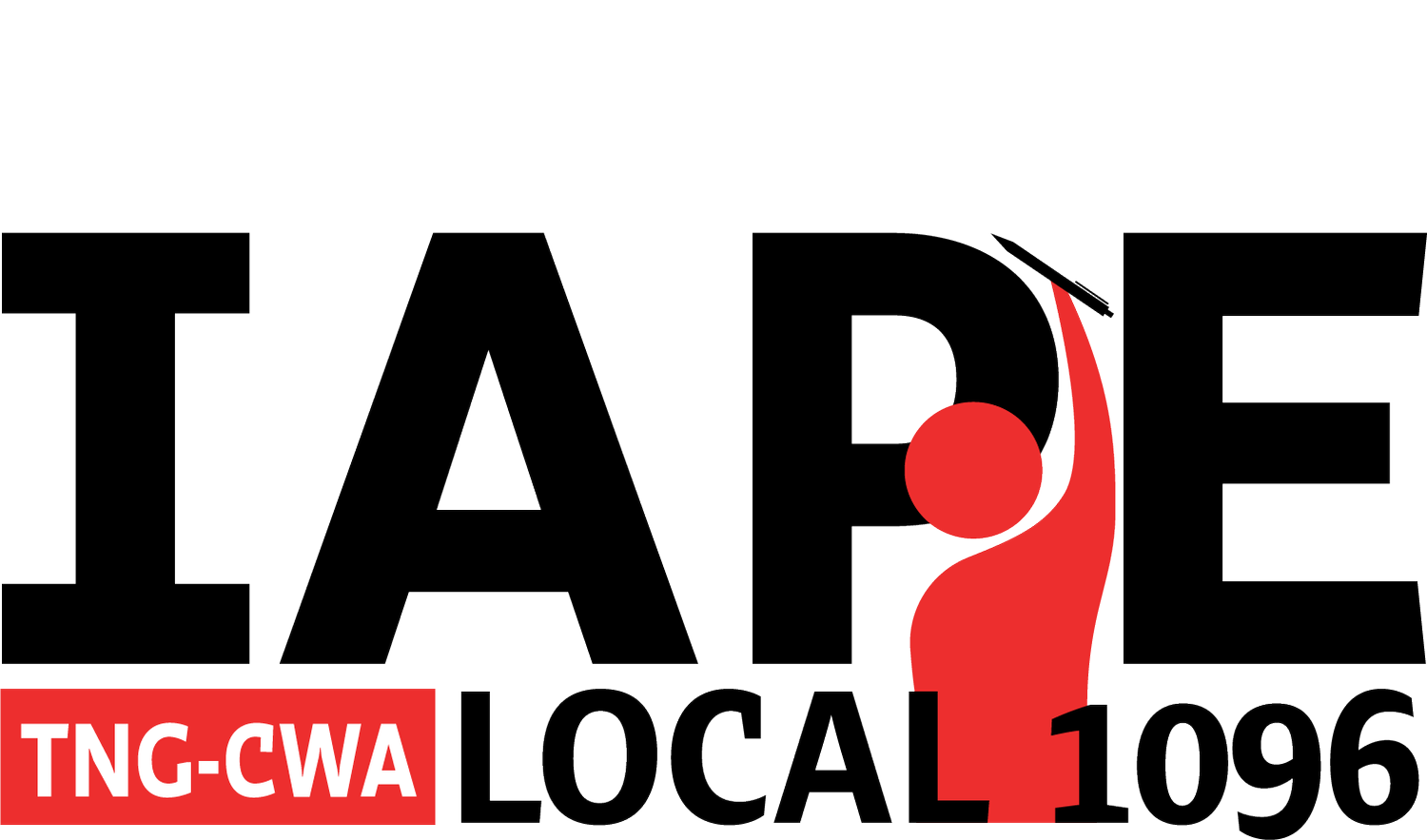March 8, 2016 E-MAIL PRINT
Still Looking At The Dow Jones Gender Gap
After All These Years . . .
In 1991, as part of a grievance challenging Dow Jones layoffs, IAPE looked at rates of pay among Union-represented women and men at Dow Jones and the results were startling: Among all job classifications, women made up 46% of the workforce and were paid approximately 24% less than men, on average.
IAPE had been badgering Dow Jones management about discrimination and bias for years, but this was the first time the Union had conducted a comprehensive review of salary data relative to gender and race or ethnicity. Members were angry and demanded action. Two years later — after initially rebuffing IAPE proposals — the Company relented and agreed to a non-discrimination clause in the IAPE/DJ collective agreement.
In recognition of International Women's Day, the Union decided to take another look at pay data at Dow Jones. Sadly, in 25 years' time, there has been little progress.
As of the end of 2015, the male/female split among full-time IAPE-represented employees narrowed by a single percentage point — women now make up 47% of the Union workforce. Average salaries have more than doubled since 1991, but our analysis shows that women are still paid only 86.8% as much as their male colleagues.
Under the terms of our contract, the Company is required to pay certain salary minimums, but may exceed those minimum levels at the discretion of management. Once a newer employee passes through introductory pay-scale levels, management is only required — by contract — to pay annual Union-negotiated salary increases. Some people receive more than others.
White males, for instance.
(See www.iape1096.org/info/documents/avgalltitles.pdf)
Separating our salary data by gender and race/ethnicity, we are able to "rank" average pay for all IAPE-represented employees (United States only — Dow Jones has not provided 2015 race/ethnicity data for staff in Canada) as follows:
All Titles — Average Salary Rankings:
1. White Male — $1,773.05 per week
2. Asian Male — $1,748.52 per week
3. Asian Female — $1,617.70 per week
4. White Female — $1,497.34 per week
5. Other Female — $1,404.12 per week
6. Hispanic/Latino Male — $1,320.68 per week
7. Other Male — $1,294.68 per week
8. Black/African-American Male — $1,227.88 per week
9. Hispanic/Latino Female — $1,176.51 per week
10. Black/African-American Female — $1,141.31 per week
Our 1991 study produced the following rankings:
1. White Male — $828 per week
2. Asian Male — $768 per week
3. Asian Female — $637 per week
4. White Female — $637 per week
5. Black/African-American Male — $598 per week
6. Hispanic/Latino Male — $590 per week
7. Hispanic/Latino Female — $542 per week
8. Black/African-American Female — $539 per week
Average Weekly Salary — Reporter, Special Writer, Senior Special Writer
(See www.iape1096.org/info/documents/avgreporterspecwriter.pdf)
With journalists accounting for the single largest segment of our Union's membership, the Reporter classification is the one for which we receive most pay inquiries. Here's how current average salaries rank among the Reporter/Special Writer job family:
1. Sr. Special Writer Male — $2,880.77 per week
2. Sr. Special Writer Female — $2,594.86 per week
3. Special Writer Male — $2,234.86 per week
4. Special Writer Female — $2,166.45 per week
5. Reporter Male — $1,999.34 per week
6. Reporter Female — $1,800.85 per week
Perhaps more glaring than "just" salary is a lack of diversity in the workplace in general, and especially among senior titles. Looking at the Reporter/Special Writer/Senior Special Writer progression, the job description for Special Writer reads as follows:
Reporters and copy editors may qualify for these classifications if they possess, in the opinion of management: Marked creative writing ability; ability to perform duties with minimal supervision and originality and initiative in developing news coverage in the fields assigned; ability to supervise the work of other reporters, copy readers or copy editors and edit, process and rewrite news material.
Similarly, the Sr. Special Writer description reads:
Reporters and copy editors may qualify for these classifications if they possess, in the opinion of management: Marked creative writing ability; ability to perform duties with minimal supervision and originality and initiative in developing news coverage in the fields assigned; ability to supervise the work of other reporters, copy readers or copy editors and edit, process and rewrite news material.
Currently, there are 26 IAPE-represented Special Writers and 29 Sr. Special Writers in the IAPE bargaining unit — however, only seven non-white employees are included among that group (four Special Writers, three Sr. Special Writers). Of course, even in the Reporter ranks only 18% of the Union-represented workforce is non-white.
Average Weekly Salary — Years In Current Position
Sometimes management tries to explain pay gaps with claims of pay for experience. While salary data shows a narrowing of the gender gap since 1991, our most-recent pay data shows a disturbing trend towards a new divide between male and female average salaries — suggesting either males are being rewarded with higher salaries or more males than females are being hired into better-paying positions. Comparing current average pay to years worked in current positions produces the following rankings:
(See www.iape1096.org/info/documents/avgyrsincrntposn.pdf)
1. Male 20+ Years — $2,716.81 per week
2. Female 20+ Years — $2,387.12 per week
3. Male 15-20 Years — $2,091.33 per week
4. Female 15-20 Years — $2,072.80 per week
5. Male 10-15 Years — $1,829.90 per week
6. Male 5-10 Years — $1,812.64 per week
7. Female 10-15 Years — $1,767.94 per week
8. Male 0-5 Years — $1,767.60 per week
9. Female 5-10 Years — $1,667.93 per week
10. Female 0-5 Years — $1,556.85 per week
11. Male New Hire — $1,302.30 per week
12. Female New Hire — $1,167.59 per week
Is there a pay-gap problem at Dow Jones? Let's put it this way: Nationally, women were paid almost 80 cents to the dollar in 2015. In this regard, Dow Jones is a slightly above average company. We deserve better.
#PledgeForParity

